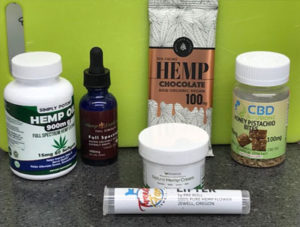By Maria Ofitserova
 The United States 2018 Farm Bill changed the legal status of both domestic hemp cultivation and manufacturing of products that include parts or derivatives of hemp plants, including cannabidiol (CBD) derived from hemp. Moving forward, after obtaining the approval from the USDA, the individual States will assume primary regulatory authority over the hemp industry. The States need to present their plans for regulating hemp industry and otherwise be subject to USDA regulations. Unfortunately, there are several issues causing delays with release of standardized rules, the main problem being the absence of Federal delta-9 tetrahydrocannabinol (THC) testing standards. Testing for the presence of THC is necessary to distinguish hemp from marijuana.
The United States 2018 Farm Bill changed the legal status of both domestic hemp cultivation and manufacturing of products that include parts or derivatives of hemp plants, including cannabidiol (CBD) derived from hemp. Moving forward, after obtaining the approval from the USDA, the individual States will assume primary regulatory authority over the hemp industry. The States need to present their plans for regulating hemp industry and otherwise be subject to USDA regulations. Unfortunately, there are several issues causing delays with release of standardized rules, the main problem being the absence of Federal delta-9 tetrahydrocannabinol (THC) testing standards. Testing for the presence of THC is necessary to distinguish hemp from marijuana.
According to the Farm Bill, hemp should have no more than 0.3 % of THC present. In Cannabis sativa plants, THC is present in the neutral form as delta-9 tetrahydrocannabinol, as well as in carboxylated form as delta-9-tetrahydrocannabinolic acid (THCA). Heat causes decarboxylation of delta-9 tetrahydrocannabinolic acid, converting it to tetrahydrocannabinol. The Farm Bill doesn’t specify what forms of THC should not exceed 0.3 % but it does mention that testing procedure should utilize “post-decarboxylation or other similarly reliable methods.” The phrase “other similarly reliable methods” creates confusion as to the principle of the methods that could be used.
Using Gas Chromatography would be considered a “post-carboxylation method,” but this technique doesn’t allow the analyst to obtain the actual cannabinoids profile for hemp and/or marijuana, since elevated temperature causes chemical changes to the compounds in the sample… And having information about different forms of cannabinoids present in the plant is important to growers and product manufacturers alike, since this may affect the price of the crop.
The HPLC technique is much more useful for testing cannabinoids in hemp since it is able to differentiate between the forms of cannabinoids. The HPLC method allows the analyst to determine neutral and carboxylated forms of cannabinoids separately and gives flexibility in the ways of reporting composition. Comments from the USDA do suggest that total THC concentration, meaning THC naturally present in neutral form as well as formed from delta-9 Tetrahydrocannabinolic acid, should be taken into account when classifying Cannabis sativa as hemp. Note to analysts: when doing calculations for total THC, one should keep in mind that due to differences in molecular weight a coefficient of 0.877 should be used to convert THCA percent to THC percent.
Pickering Laboratories, Inc. has developed a simple HPLC method with post-column derivatization for the analysis of cannabinoids, including THC, THCA, CBD and CBDA. The method can be used for analysis of both hemp and marijuana. Post-column derivatization decreases matrix interferences and increases sensitivity of detection since the reagent is specific for cannabinoids. This technique eliminates the need for sample clean-up, so a simple extraction is sufficient to successfully analyze not only plant materials but also finished products containing hemp, for example edibles and supplements.

